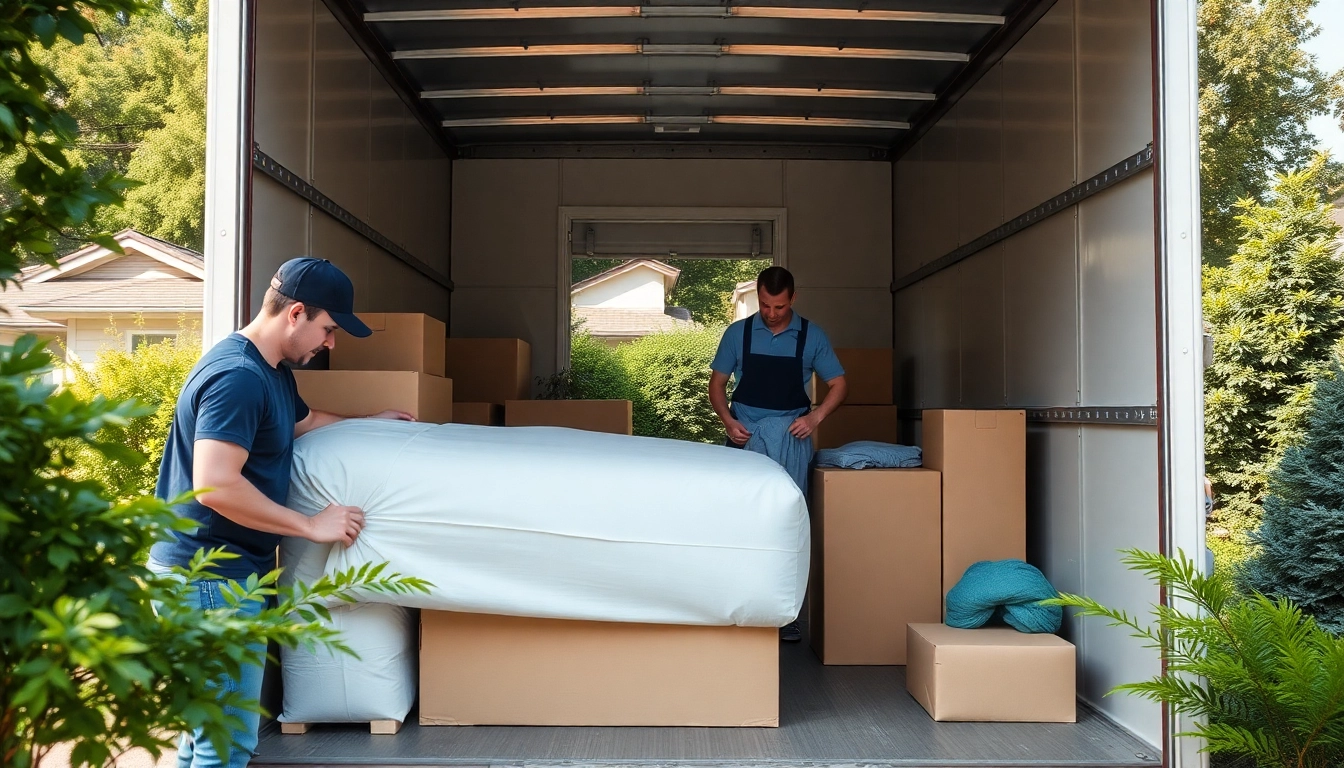Understanding the Basics of Moving with https://bennettsmoving.com/
Key Steps to Planning Your Move
Planning a move can be a daunting task, but breaking it down into manageable steps makes it more achievable. The first key step is to set your moving date. Consider timing to avoid peak moving seasons, which can increase costs and stress. Once the date is set, create a timeline that outlines major milestones in the process, such as booking your movers, starting to pack, and notifying utilities of your move.
Another critical aspect of planning is creating a budget. Outline all potential costs, including moving services, packing materials, and any new furniture or renovations required. A well-planned budget will help you avoid unexpected expenses and make informed decisions.
For added convenience, check out https://bennettsmoving.com/, which provides useful resources and information to facilitate your moving process.
Types of Moving Services Offered
Different types of moving services cater to various needs. For individuals and families, residential moving services are available, helping to transport items to a new home efficiently. For businesses, commercial moving services focus on relocating office equipment and ensuring minimal downtime. Specialized moving services are also available for unique circumstances, such as long-distance moves, military relocations, or senior moving assistance.
In addition to full-service moves, many companies offer packing services, transportation, loading and unloading, and disassembly and reassembly of furniture. Some services are tailored to specific items, like pianos or artwork, which require extra care and expertise.
Preparing Your Belongings for a Smooth Transition
Preparation is key to ensuring a smooth transition during your move. Start early by decluttering your home and deciding which items to keep, sell, or donate. A minimalistic approach not only eases your packing burden but can also decrease moving costs.
Begin packing non-essential items before your move date. Use quality packing materials, such as sturdy boxes, bubble wrap, and packing tape, to protect your belongings. Label each box clearly, indicating its contents and the room it belongs to, making unpacking more organized and efficient.
Choosing the Right Moving Company: Insights from https://bennettsmoving.com/
Evaluating Customer Reviews and Testimonials
When selecting a moving company, it’s crucial to evaluate customer reviews and testimonials to gauge the quality of service provided. Look for feedback on reliability, professionalism, and overall satisfaction. Websites like Yelp or Google Reviews can be excellent resources for unbiased opinions.
Pay attention to recurring themes in the reviews. If multiple customers highlight the same issues, it may signify a pattern worth considering. Conversely, positive feedback about punctuality and care in handling items can indicate a reputable moving company. Consider asking for references or speaking directly to past clients for firsthand insights.
Understanding Pricing and Estimates
Understanding the pricing structure of moving services is essential for making an informed decision. Get in-home estimates from multiple companies to compare costs. Ensure these estimates account for all factors, including distance, the volume of items, and any additional services you may require.
Be cautious of estimates that seem unusually low; they may be a tactic to attract customers, potentially leading to added costs later on. Always clarify what the estimate includes and discuss any potential extra charges that might arise during the moving process.
Questions to Ask Before Hiring
Before hiring a moving company, prepare a list of questions to ensure they meet your expectations. Consider asking the following:
- What is your experience with moving items similar to mine?
- Are you licensed and insured?
- What services are included in your price estimate?
- How do you handle damages or lost items?
- What is your cancellation policy?
Asking these questions will help clarify doubts and give you confidence in your choice of moving company, ensuring a better moving experience.
Preparing for Your Move with https://bennettsmoving.com/
Creating a Moving Checklist
A moving checklist is a vital tool to keep you organized throughout the moving process. It should include tasks divided by time frames, such as those to complete 8 weeks before the move, 4 weeks prior, and the week of the move. Key tasks may include notifying your landlord, setting up utilities in your new home, forwarding your mail, and scheduling the moving company.
Checklists help ensure you don’t forget any important tasks, contributing to an organized and less stressful transition.
Tips for Packing Efficiently
Efficient packing can significantly streamline your moving day and minimize chaos. Start by packing one room at a time, which creates a focused environment and prevents mixing items. Use high-quality boxes and pack heavier items at the bottom and lighter items on top to avoid accidents.
Utilize your belongings as packing materials. For instance, fill drawers with smaller items, or use clothing to wrap delicate items. This strategy reduces the amount of packing material you need and helps maximize space in the moving truck.
Utilizing Moving Supplies Effectively
Utilizing moving supplies efficiently can enhance the safety and organization of your move. Invest in quality moving boxes, tape, markers for labeling, and protective gear like bubble wrap and moving blankets. Each supply plays a crucial role in ensuring your belongings remain intact during transport. Ensure that moving supplies are correctly used; for example, tape should secure boxes well, and labels should be clear and placed prominently to enhance recognition during unpacking.
Executing Your Move: Day-of Tactics with https://bennettsmoving.com/
Coordinating with Your Moving Team
On the day of the move, effective coordination with your moving team is crucial. Start by providing the movers with a clear layout of your new home and where you want to position each item. Communication is vital during this process—don’t hesitate to express any specific requests or concerns about how you want your belongings to be treated.
Designate a person, whether a family member or a friend, to oversee the moving process, ensuring everything goes smoothly and reinforcing communication between you and the movers.
Managing Unexpected Challenges
No move is without surprises; therefore, it’s important to be prepared to manage unexpected challenges. Common issues include delays in arrival, bad weather, or last-minute changes. Stay flexible and keep a positive attitude, recognizing that adaptability can mitigate these challenges.
Have a contingency plan in place, such as alternative moving dates if necessary. Having a toolkit with essential supplies can also make a difference if any last-minute repairs are needed on the moving day.
Ensuring Your Belongings Arrive Safely
To ensure your belongings arrive safely, double-check that all items are securely packed before loading. During transport, keep valuable items and important documents with you rather than loading them onto the moving truck.
Upon arrival at your new home, do a thorough walkthrough with your moving team to check that all items are accounted for, and ensure everything has been unloaded. This practice can help catch any potential issues while still on-site, saving heartache later.
Post-Move Considerations with https://bennettsmoving.com/
Unpacking Strategies for a Quick Settle-In
After your move, efficient unpacking is essential for a smooth transition into your new home. Start with the essentials—unpack what you need immediately, such as toiletries, dishes, and bedding. This will help you quickly establish functional spaces in your new home.
Use a systematic approach by unpacking one room at a time, which prevents overwhelming feelings and allows you to focus. As you unpack, ensure items are put in their designated places, reducing clutter and promoting organization.
Updating Your Address and Other Essentials
One of the key post-move tasks is updating your address with various institutions. Notify the post office, banks, credit card companies, and subscriptions to ensure you receive important documents and packages at your new location. An organized approach can make this process easier—create a checklist of all entities needing your updated information.
Tips for Settling into Your New Home
Settling into your new home involves not just unpacking but also integrating into your new community. Take time to meet your neighbors, explore local amenities, and engage in community activities, which can enhance your experience in your new environment. Create a comfortable and personalized living space by arranging furniture and decor to your liking, which can help you feel more at home rapidly.
Remember, moving is not just a physical relocation but also an emotional transition. Allow yourself time to adapt and settle into your new life.



